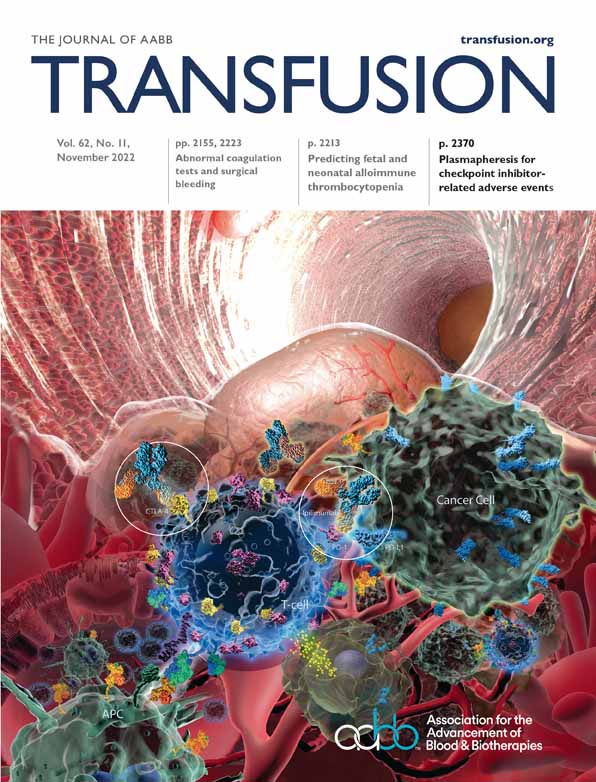New ultraviolet C light-based method for pathogen inactivation of red blood cell units
Wiebke Handke and Ute Gravemann contributed equally to this work.
Funding information: Macopharma S.A.S; Research Foundation of the German Red Cross Blood Services
Abstract
Background
Pathogen inactivation (PI) technologies for platelet concentrates and plasma are steadily becoming more established, but new PI treatment options for red blood cells (RBCs), the most commonly used blood component, still need to be developed. We present a novel approach to inactivating pathogens in RBC units employing ultraviolet C (UVC) light.
Methods
Whole blood-derived leukoreduced RBCs suspended in PAGGS-C, a third generation additive solution, served as test samples, and RBCs in PAGGS-C or SAG-M as controls. Vigorous agitation and hematocrit reduction by diluting the RBCs with additional additive solution during illumination ensured that UVC light penetrated and inactivated the nine bacteria and eight virus species tested. Bacterial and viral infectivity assays and in vitro analyses were performed to evaluate the system's PI capacity and to measure the RBC quality, metabolic, functional, and blood group serological parameters of UVC-treated versus untreated RBCs during 36-day storage.
Results
UVC treatment of RBCs in the PAGGS-C additive solution did not alter RBC antigen expression, but significantly influenced some in vitro parameters. Compared to controls, hemolysis was higher in UVC-treated RBC units, but was still below 0.8% at 36 days of storage. Extracellular potassium increased early after PI treatment and reached ≤70 mmol/L by the end of storage. UVC-treated RBC units had higher glucose and 2,3-diphosphoglycerate levels than controls.
Conclusion
As UVC irradiation efficiently reduces the infectivity of relevant bacteria and viruses while maintaining the quality of RBCs, the proposed method offers a new approach for PI of RBC concentrates.
CONFLICT OF INTEREST
WH, UG, THM, and AS received grants from the Research Foundation of the German Red Cross Blood Services (Deutsche Forschungsgemeinschaft der Blutspendedienste des Deutschen Roten Kreuzes) and Macopharma for the development of the UVC-based PI technology for platelets. WH, UG, and AS filed a joint patent application for this technology.




